Preservation of goods
How To Preserve Fresh Pineapple For Long Exports
Pineapple Growing Areas In Vietnam
Pineapple growing areas in Vietnam include many provinces and regions across the country. Provinces with large pineapple growing areas include Tien Giang (14,800 ha), Kien Giang (10,000 ha), Hau Giang (nearly 1,600 ha), Long An (1,000 ha), Thanh Hoa (from 3,789 ha (2005) to 1,910 ha (2011)), Ninh Binh (3,000 ha) and many other regions.
Vietnam is one of the 10th largest pineapple producing countries in the world, with a total pineapple growing area of about 34,642 hectares and an output of hundreds of thousands of tons per year.
Pineapple can grow well in acid sulfate soils and special soil conditions. Dong Thap Muoi region, with its acid sulfate soil characteristics, has become one of the major pineapple growing areas and brings high economic efficiency to farmers. Pineapple adapts well to the natural conditions and soil conditions of the region, so it is chosen as a suitable main crop for this region.
The technical process of planting and caring for pineapple trees includes many stages such as soil preparation, seed selection, sowing seeds or planting cuttings, watering and fertilizing, protecting plants from insects and diseases, harvesting and post-harvest handling. Pineapple planting and care technology may vary depending on the growing region and local conditions.
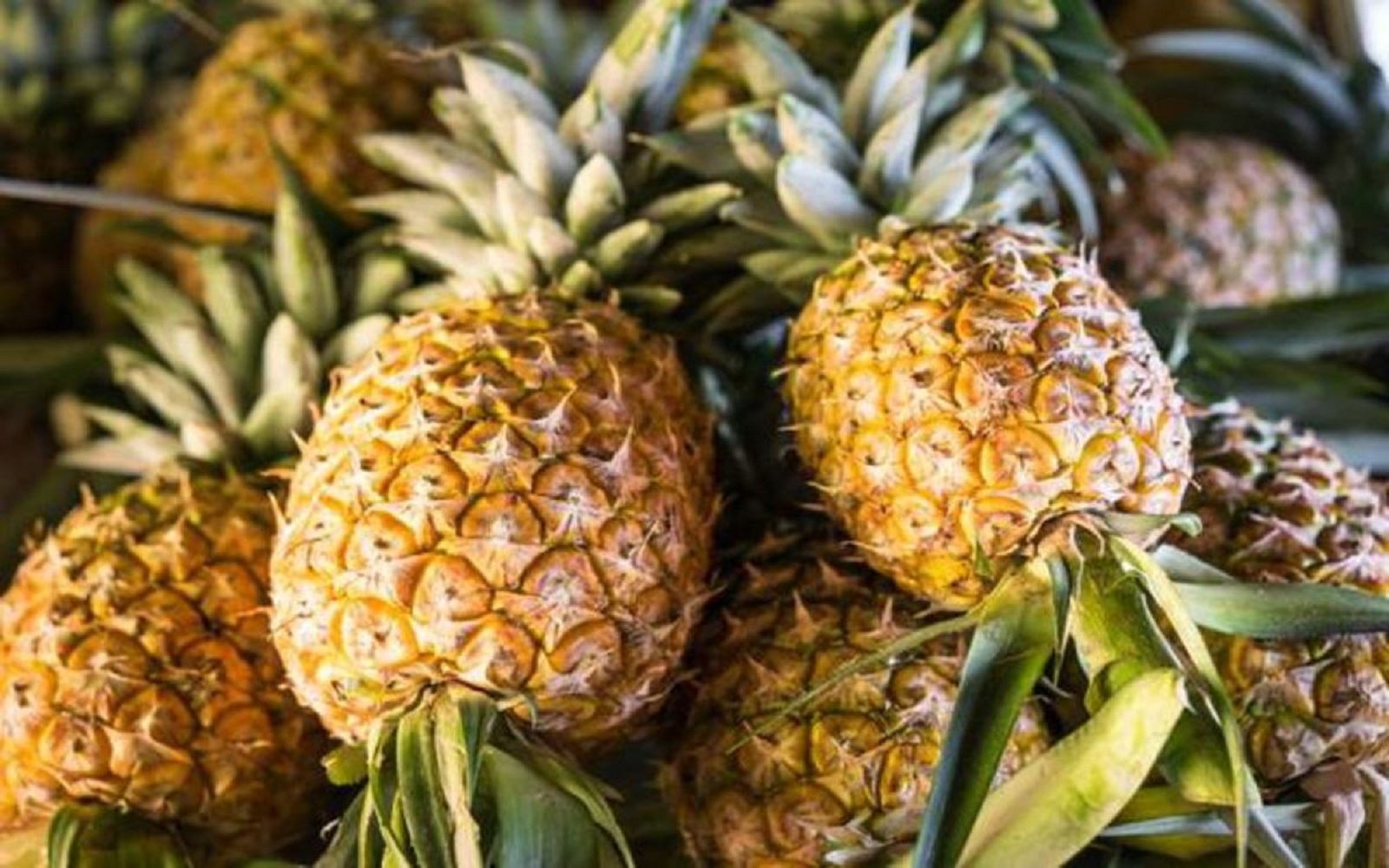
>>> See More : Standards & Regulations in Exporting Agricultural Products to the US and Europe
Types of Pineapple in Vietnam
In Vietnam, there are many types of pineapple grown and distributed. Below are some popular types of pineapple in Vietnam:
- Queen Pineapple (Ananas comosus): This is the most popular and widely grown pineapple in Vietnam. Queen Pineapple has sweet taste, juicy flesh, and yellow skin. It is large in size, suitable for processing and fresh consumption.
- Cayenne Pineapple (Ananas comosus var. Cayenne): Cayenne pineapple is also a popular pineapple in Vietnam. It has a sweet and sour taste, orange-yellow flesh, and red-green skin. Cayenne pineapple is suitable for processing into juice, jam, or as an ingredient for industrial products.
- Grass Pineapple (Ananas erectifolius): Grass Pineapple is a wild pineapple native to Northern Vietnam. This pineapple has a sweet and sour taste and is suitable for making jam, juice, or as an ingredient in dishes.
- Gourd Pineapple (Ananas ananassoides): Gourd Pineapple is a type of pineapple that has a shape similar to a gourd, so it is called Gourd Pineapple. This type of pineapple has a sweet taste, a characteristic aroma and is suitable for processing into jam, juice, or dessert.
- Pineapple (Ananas bracteatus): Pineapple has a sweet taste, characteristic aroma and is suitable for processing into juice, jam, or desserts.
- MD2 Pineapple: is a popular pineapple in domestic and foreign markets. They are available in most major markets such as Europe, Asia, and America. MD2 pineapple has a thin skin, is juicy and has a sweet taste, does not cause a burning sensation on the tongue. This type of pineapple originates from Lam Dong and is often stored in the refrigerator.
MD2 pineapple is a hybrid between Queen and Cayenne, combining the advantages of both varieties. MD2 pineapple has yellow flesh, crispy, sweet and fragrant, and large size. MD2 pineapple trees are also grown and cared for using special techniques to achieve high productivity.
MD2 pineapple is also used in the tissue culture industry to produce high quality seedlings. In addition, there are instructions on planting and caring techniques for MD2 pineapple to develop the plant and ensure good yield.
These are just some of the popular pineapple varieties in Vietnam. In addition, there are other types of pineapple such as Sap pineapple, Honey pineapple, Da Lat pineapple, and Ninh Thuan pineapple. Each type of pineapple has its own characteristics in shape, taste, and usage.
Pineapple Export Volume in 2022
Pineapple export volume in 2022 is a specific topic and there is no exact information about it in the search results. However, based on the related results, some information regarding pineapple export and volume in 2022 can be provided.
According to an article on vneconomy.vn, in the structure of exported fruits and vegetables in 2022, the proportion of processed product exports accounted for 29.47%, an increase of 3.8 percentage points compared to the previous year. However, there is no specific information on pineapple export output in 2022.
An article on baodautu.vn also mentioned the export of processed pineapples and said that in the structure of exported fruits and vegetables in 2022, the export proportion of processed products accounted for 29.47%, an increase of 3.8 percentage points compared to the previous year.
A news article on thanhnien.vn also mentioned the mango export situation in 2022 and said that mango exports are facing difficulties, reaching less than 100 million USD in the first months of the year. However, there is no specific information about pineapple exports in this article.
Causes of Pineapple Spoilage After Harvest
Causes of post-harvest damage to pineapples may include the following factors:
Poor initial pineapple quality: The pineapple may have been damaged, spoiled or have defects before harvest. These pineapples are prone to rapid deterioration after harvest.
Improper post-harvest handling: Post-harvest handling of pineapples is important to keep them fresh and prevent spoilage. If handling is not done properly, such as not removing damaged fruit, not cleaning or storing properly, pineapples will spoil quickly.
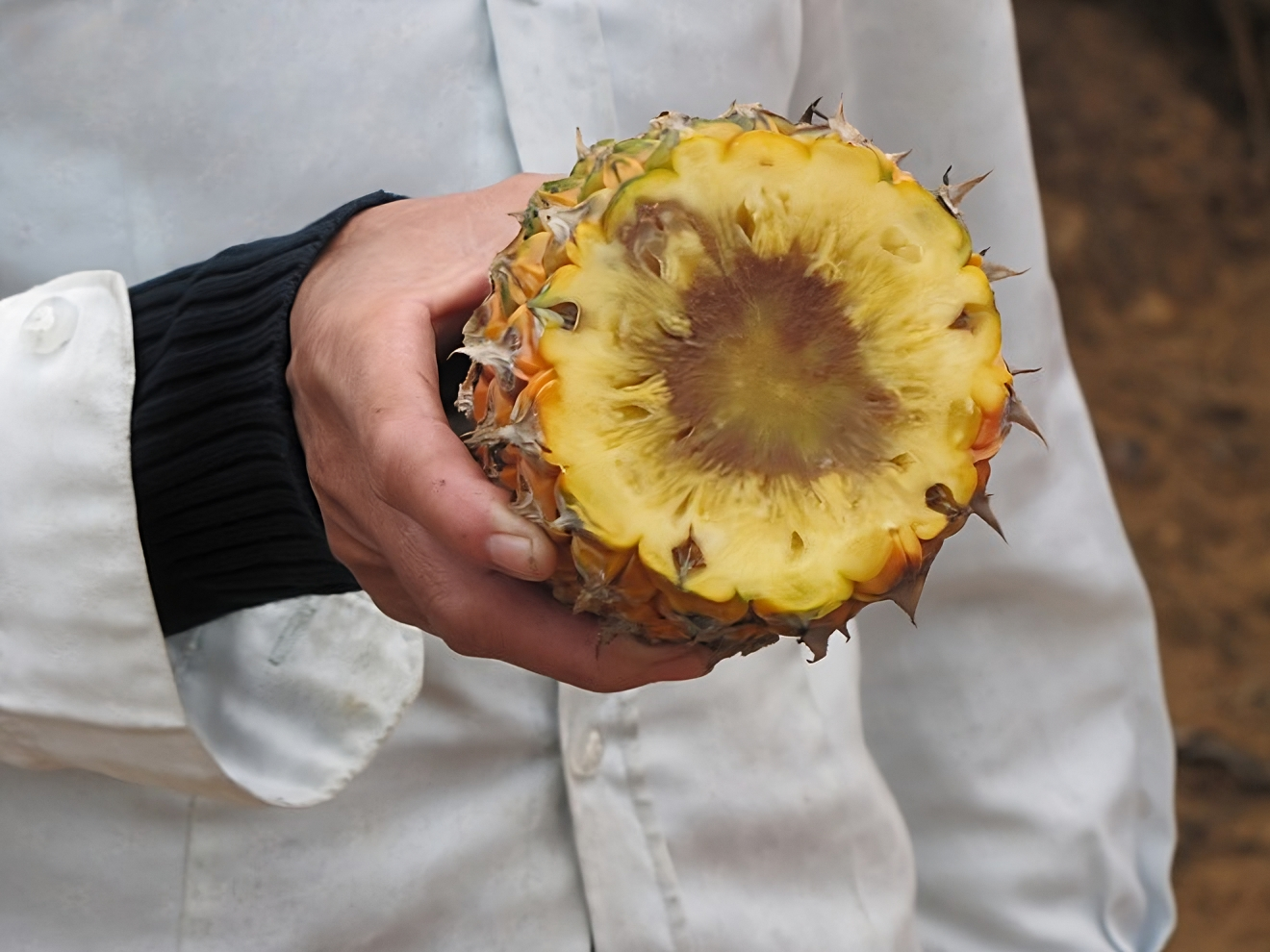
Improper storage environment: To preserve pineapple after harvest, it is necessary to create a suitable storage and transportation environment. Temperature, humidity and light can affect the quality and shelf life of pineapple. Improper environment can cause damage to pineapple.
Bacteria and molds: Bacteria and molds are agents that cause damage to pineapples after harvest. They can enter the pineapple through wounds, causing discoloration, rot, or decomposition of the fruit.
Rough handling and impact: Pineapples are sensitive to rough handling and impact. If pineapples are not handled gently or transported carefully, they can be damaged, reducing the quality and shelf life of the fruit.
What Temperature Should I Keep Pineapple Fresh For?
The temperature to keep pineapple fresh is between 8-10°C. In the refrigerator, you should put pineapple in the vegetable compartment.
If the temperature is too low, the pineapple will lose its flavor and deliciousness. On the contrary, if the temperature is too high, the pineapple will quickly spoil.
Humidity during pineapple storage should be around 90% to ensure the freshness of this fruit.
Preserving Pineapple Exported to Japan Using AnsiP 1-MCP & Natacoat?
Since China banned imports of Taiwanese pineapples in March last year, Taiwanese exporters have shifted pineapple sales to other overseas markets such as Japan, South Korea, Singapore and Australia.
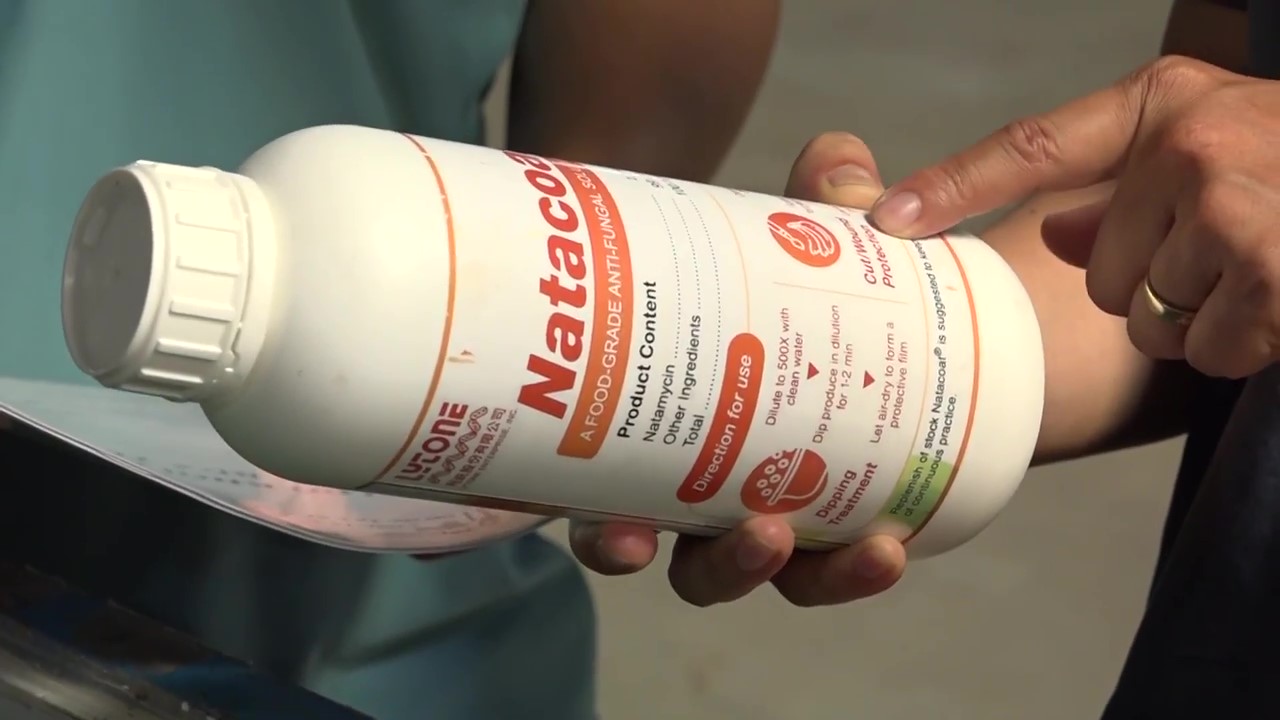
Previously, it only took 3-4 days to ship pineapples from Taiwan to mainland China, but now it takes more than 7 days to ship to those countries.
How to control ripeness and prevent mold contamination during storage and transportation is a difficult task for pineapple exporting enterprises.
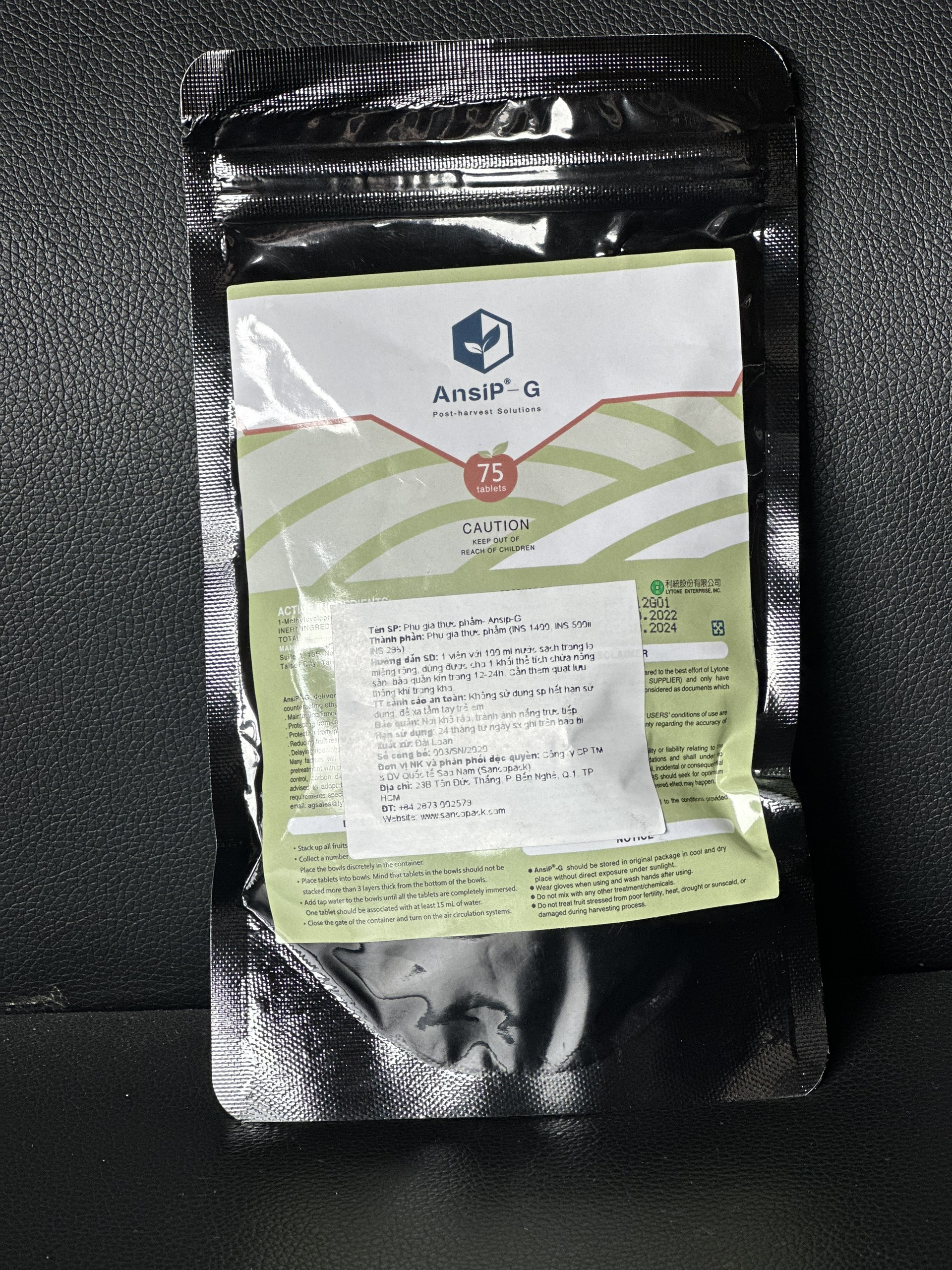
AnsiP-S 1-MCP and Natacoat , two products of the latest post-harvest preservation technology in the world, and SANCOPACK is the exclusive distributor in Vietnam, have been applied by many exporters to solve post-harvest quality problems.
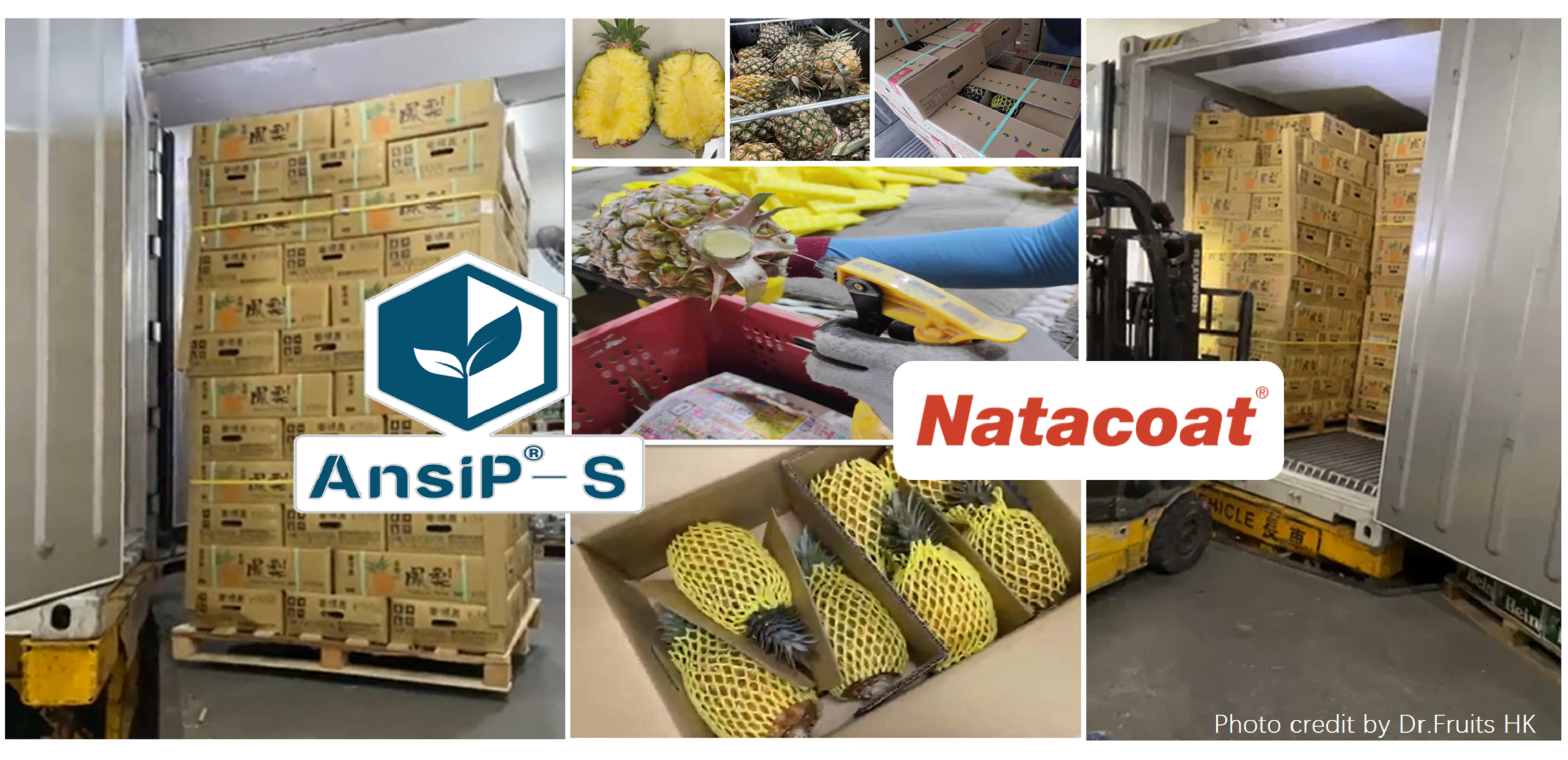
By using AnsiP-S 1-MCP in the packaging process, the ripening mechanism and color change of pineapples can be delayed for more than 10 days after harvest and shipment to Japan.
Regarding fungal infections, when Natacoat is applied to pineapple cuts, its inhibitory effect on fungal growth is more durable than chlorine or alcohol, which only lasts no more than 10 days.
In other words, AnsiP-S 1-MCP plus the biological product Natacoat helps fruits comply with the high quality standards required by Japanese importers.
Both AnsiP-S and Natacoat are user-friendly and meet FDA standards. Furthermore, both products leave no chemical residue in pineapples.
How to Preserve Fresh Pineapple for Export Using Natacoat Biological Products and MAP Modified Atmosphere Bags to Keep Fresh for More Than 30 Days
To preserve fresh pineapples for export, a method using the biological product Natacoat and modified atmosphere packaging (MAP) bags can be applied.
Natacoat biological preparation is a natural fungus inhibitor, which helps prevent fungal growth and prolongs the shelf life of fruits.
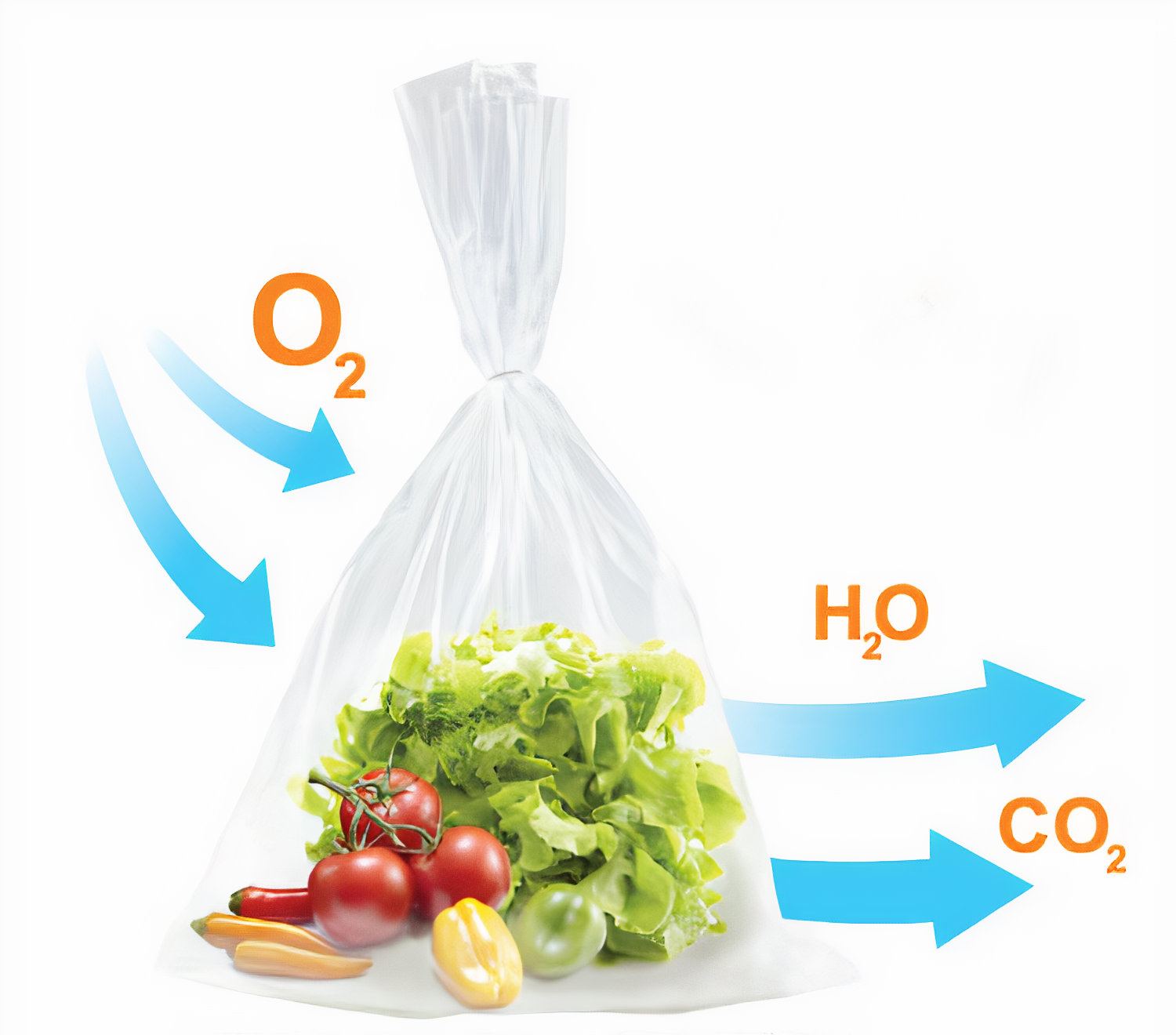
Modified Atmosphere Packaging (MAP) bags are used to adjust the gas composition in the package to create an ideal environment for pineapple preservation.
When applying the biological product Natacoat and the MAP modified atmosphere bag, the atmosphere in the bag will be adjusted to increase the CO2 content and reduce the O2. This change helps slow down the respiration and anti-oxidation process in pineapple, thereby extending the storage time and maintaining the freshness of the fruit.
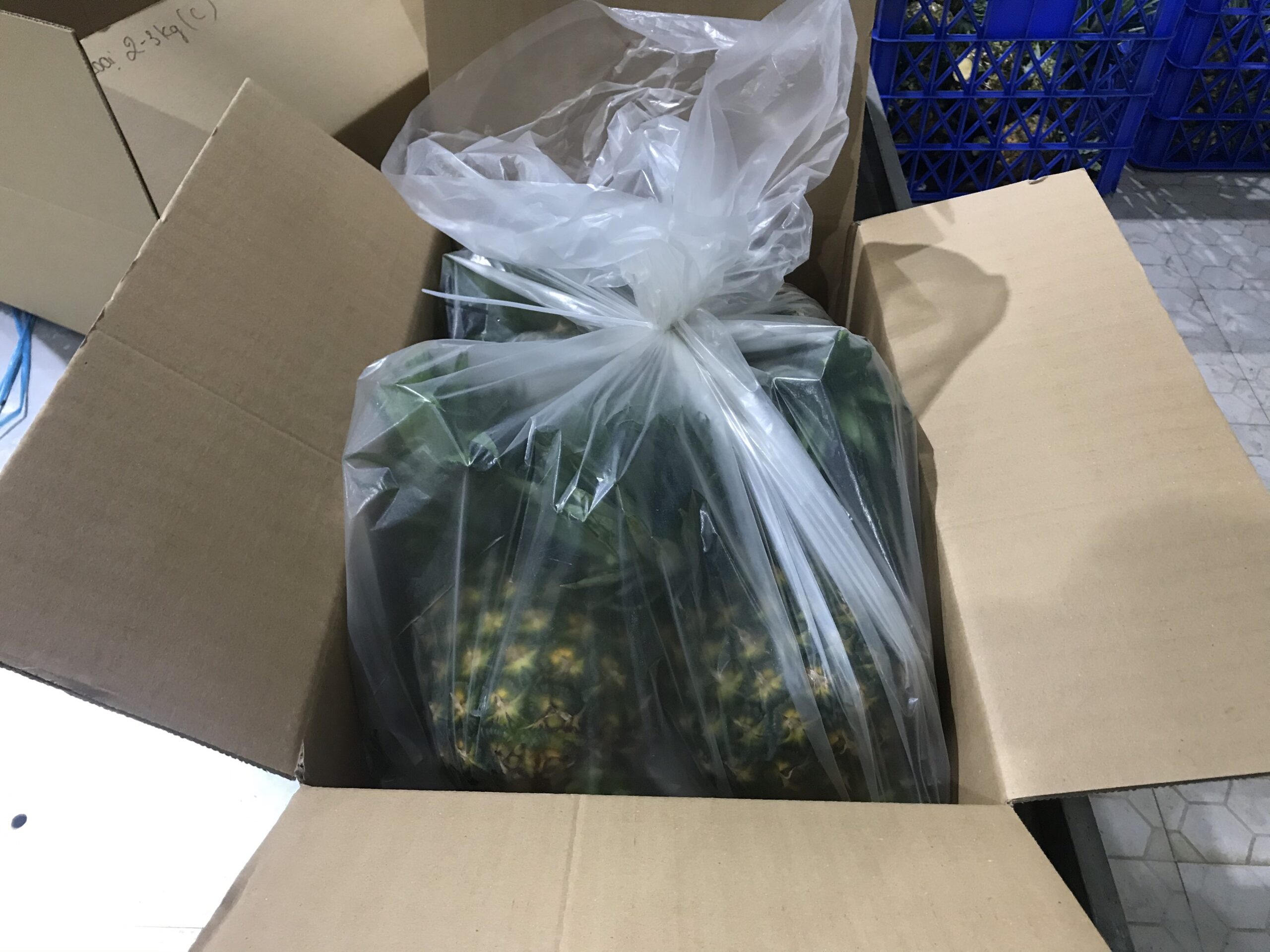
This method of preservation can help reduce the rate of damage and dehydration, ensuring that pineapples stay fresh for a long time during transportation and export. However, to ensure the effectiveness of this method, it is necessary to follow the correct procedure and use products and bags of guaranteed quality. Please contact 0908 105 115 for advice and support.
See More:
- Top 12 Best Food Preservation Methods Today
- Top 11 Methods of Preserving Fruits and Vegetables After Harvest
- AnsiP 1-MCP Agricultural Product Preservation
- GreenMAP Bags Keep Vegetables And Fruits Fresher And Longer
- How to Preserve Fresh Longan After Harvest for Up to 30 Days
- Ways to Preserve Agricultural Products After Harvest to Export Standards
- The Fastest And Easiest Way To Preserve Fruit In Business?
- Natacoat Anti-Mold Preservation For Fruits And Vegetables
- Detailed Instructions on How to Preserve Oranges Fresh for a Long Time and Safely
- Ethephon Safe Fruit Ripening Agent
- KADOZAN Biological Product (Chitosan Content 2%)
- SUPER FRESH Ethylene Absorbent Bag
- Ethylene Absorber In Cold Storage For Vegetables And Fruits
- Ethylene Absorber KIF Filter Tubes
- How to Preserve Fresh Ginger for a Long Time, Prevent Mold – Ensure Export Standards to the US and Europe
- How to Preserve Fresh Pineapple for Long-distance Export
- HOCl Solution for Preserving Fruits and Food
- How to Preserve Fresh Phalaenopsis Orchids for Long-distance Transport and Export
- Instructions on How to Harvest and Preserve Avocados to Ripen Long Effectively
HOTLINE: 028.73002579 (HCM) – 024.73002579 (Hanoi)
Get advice and order quality, reputable products at:
SAO NAM JOINT STOCK COMPANY (SANCOPACK)
Email : info@vietnamtravelcard.vn.vn
| ✅Preserving vegetables and fruits: | ⭐Ethylene absorption, anti-mold, sterilization, anti-dehydration. |
| ✅Effective: | ⭐Keep fresh longer, reduce damage, slow ripening & aging. |
| ✅Standard: | ⭕Food safety, US FDA |
| ✅Biological products: | ⭐ Chitosan, 1-MCP, MAP, Natamycin |
| ✅Certification: | ⭐Full quality certification. |


